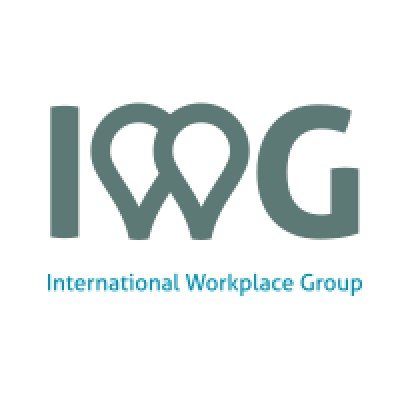Shanghai: The Global Magnet for Multinational Corporations
July 31, 2024, 4:23 pm

Location: Dominican Republic, Distrito Nacional, Santo Domingo
Employees: 1001-5000
Founded date: 1985
Shanghai is a city that dances to the rhythm of global business. It’s a vibrant tapestry woven with the threads of innovation, investment, and opportunity. Recent reports highlight Shanghai's allure as a prime destination for multinational corporations. The city has certified 30 regional headquarters and 15 research and development centers, solidifying its status as a beacon for foreign investment.
As of June 2024, Shanghai boasts 985 regional headquarters and 575 foreign-funded R&D centers. This makes it the most attractive location for multinational companies in mainland China. The Shanghai municipal government’s official WeChat account, Shanghai Fabu, proudly showcases these figures. They are not just numbers; they represent a thriving ecosystem where businesses can flourish.
Take Otis, for example. The company recently established its global R&D center in Shanghai, the largest innovation hub in its network. This decision reflects the city’s dynamic environment. It’s a place where creativity meets commerce. The president of Otis China emphasizes the rich talent pool available. Nearly 500 engineers will work here, serving not just China but the entire globe. This is a testament to Shanghai’s capacity to nurture talent and innovation.
Kimberly-Clark, another giant, echoes this sentiment. The managing director notes a shift in perception. Products made in China are now seen as high-quality and valuable. Over the past decade, Kimberly-Clark has invested heavily in R&D in China, increasing its annual investment from 13 million yuan to 25 million yuan in just two years. This surge reflects the vast market potential. With a burgeoning middle-income group, China is poised to be the largest growth market in the future.
Edward Hu, the country general manager of International Workplace Group (IWG), shares an ambitious vision. Despite challenges, IWG plans to open 100 new centers annually in China. This is not just growth; it’s a strategic expansion into a market ripe with opportunity. The company, which has been in China since 1995, aims to operate nearly 2,000 centers in the next decade. This ambition speaks volumes about Shanghai’s appeal.
The local government plays a crucial role in this narrative. Companies like Melaleuca have felt the strong support from authorities. This backing creates a conducive environment for businesses to settle and grow. It’s a partnership that fosters success.
Shanghai is not just a city; it’s a global hub. It attracts talent, investment, and innovation. The recent certifications of multinational corporations are a clear signal. They indicate a thriving business landscape. Companies are not just setting up shop; they are investing in the future.
The city’s infrastructure supports this growth. Shanghai’s transport network is a lifeline for businesses. It connects companies to markets, suppliers, and customers. This connectivity enhances efficiency and drives productivity. In a world where time is money, Shanghai delivers.
Moreover, the cultural landscape of Shanghai adds to its charm. The city is a melting pot of ideas and influences. This diversity fosters creativity. It encourages collaboration across industries. Companies benefit from this rich environment. They can tap into new ideas and perspectives.
The competitive landscape is also a driving force. Shanghai is home to numerous multinational corporations. This competition pushes companies to innovate. They must adapt to stay relevant. It’s a constant evolution, a race where only the best thrive.
Challenges exist, of course. The global economy is unpredictable. Trade tensions and regulatory hurdles can pose risks. However, Shanghai’s resilience shines through. Companies are finding ways to navigate these challenges. They are adapting strategies to align with the changing landscape.
The future looks bright for Shanghai. As more companies establish their presence, the city will continue to grow. It will attract even more talent and investment. The cycle of innovation and growth will perpetuate.
In conclusion, Shanghai stands as a testament to what a city can achieve. It is a magnet for multinational corporations, drawing them in with its promise of opportunity. The recent certifications of regional headquarters and R&D centers are just the beginning. Shanghai is not merely a destination; it is a thriving ecosystem where businesses can flourish. The world is watching, and Shanghai is ready to lead.
As of June 2024, Shanghai boasts 985 regional headquarters and 575 foreign-funded R&D centers. This makes it the most attractive location for multinational companies in mainland China. The Shanghai municipal government’s official WeChat account, Shanghai Fabu, proudly showcases these figures. They are not just numbers; they represent a thriving ecosystem where businesses can flourish.
Take Otis, for example. The company recently established its global R&D center in Shanghai, the largest innovation hub in its network. This decision reflects the city’s dynamic environment. It’s a place where creativity meets commerce. The president of Otis China emphasizes the rich talent pool available. Nearly 500 engineers will work here, serving not just China but the entire globe. This is a testament to Shanghai’s capacity to nurture talent and innovation.
Kimberly-Clark, another giant, echoes this sentiment. The managing director notes a shift in perception. Products made in China are now seen as high-quality and valuable. Over the past decade, Kimberly-Clark has invested heavily in R&D in China, increasing its annual investment from 13 million yuan to 25 million yuan in just two years. This surge reflects the vast market potential. With a burgeoning middle-income group, China is poised to be the largest growth market in the future.
Edward Hu, the country general manager of International Workplace Group (IWG), shares an ambitious vision. Despite challenges, IWG plans to open 100 new centers annually in China. This is not just growth; it’s a strategic expansion into a market ripe with opportunity. The company, which has been in China since 1995, aims to operate nearly 2,000 centers in the next decade. This ambition speaks volumes about Shanghai’s appeal.
The local government plays a crucial role in this narrative. Companies like Melaleuca have felt the strong support from authorities. This backing creates a conducive environment for businesses to settle and grow. It’s a partnership that fosters success.
Shanghai is not just a city; it’s a global hub. It attracts talent, investment, and innovation. The recent certifications of multinational corporations are a clear signal. They indicate a thriving business landscape. Companies are not just setting up shop; they are investing in the future.
The city’s infrastructure supports this growth. Shanghai’s transport network is a lifeline for businesses. It connects companies to markets, suppliers, and customers. This connectivity enhances efficiency and drives productivity. In a world where time is money, Shanghai delivers.
Moreover, the cultural landscape of Shanghai adds to its charm. The city is a melting pot of ideas and influences. This diversity fosters creativity. It encourages collaboration across industries. Companies benefit from this rich environment. They can tap into new ideas and perspectives.
The competitive landscape is also a driving force. Shanghai is home to numerous multinational corporations. This competition pushes companies to innovate. They must adapt to stay relevant. It’s a constant evolution, a race where only the best thrive.
Challenges exist, of course. The global economy is unpredictable. Trade tensions and regulatory hurdles can pose risks. However, Shanghai’s resilience shines through. Companies are finding ways to navigate these challenges. They are adapting strategies to align with the changing landscape.
The future looks bright for Shanghai. As more companies establish their presence, the city will continue to grow. It will attract even more talent and investment. The cycle of innovation and growth will perpetuate.
In conclusion, Shanghai stands as a testament to what a city can achieve. It is a magnet for multinational corporations, drawing them in with its promise of opportunity. The recent certifications of regional headquarters and R&D centers are just the beginning. Shanghai is not merely a destination; it is a thriving ecosystem where businesses can flourish. The world is watching, and Shanghai is ready to lead.


